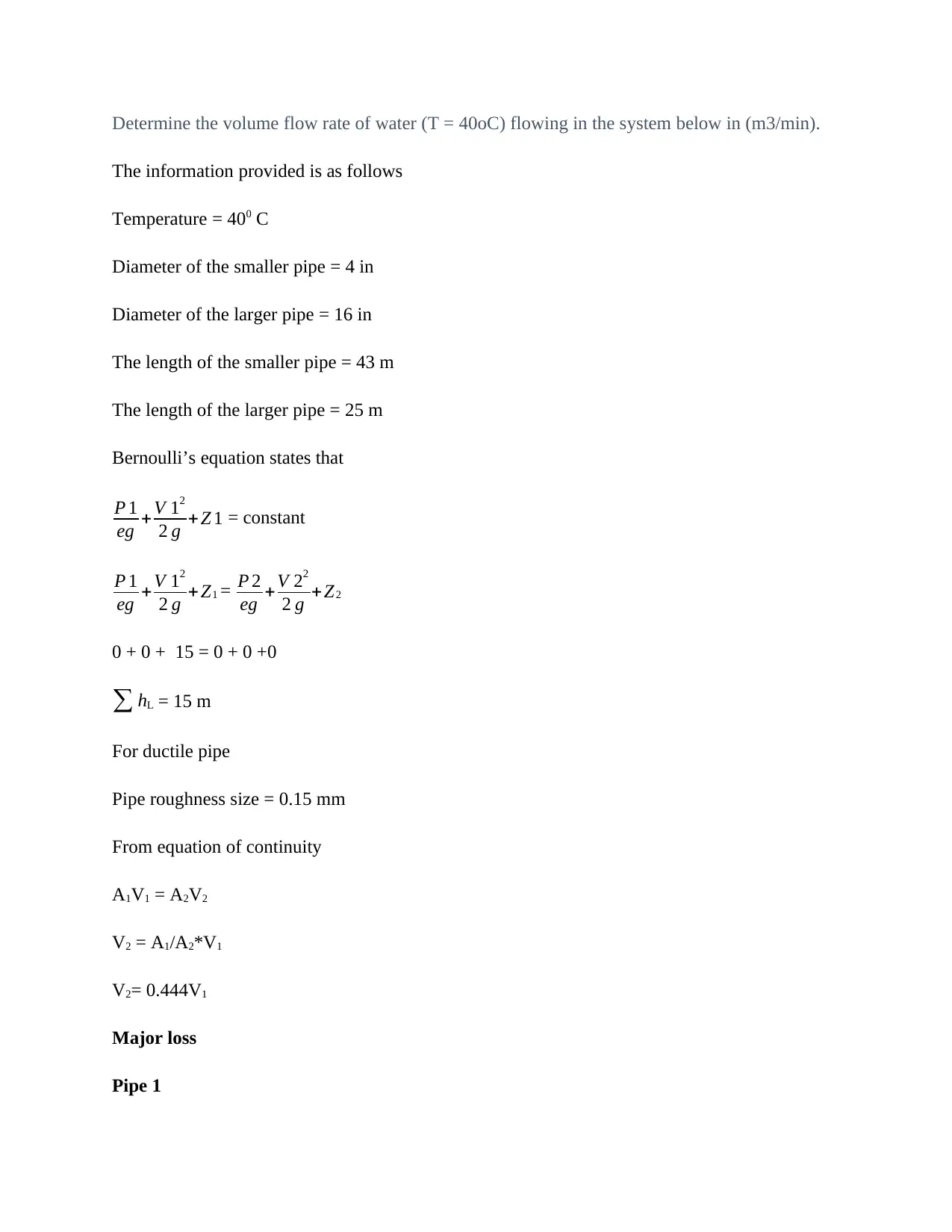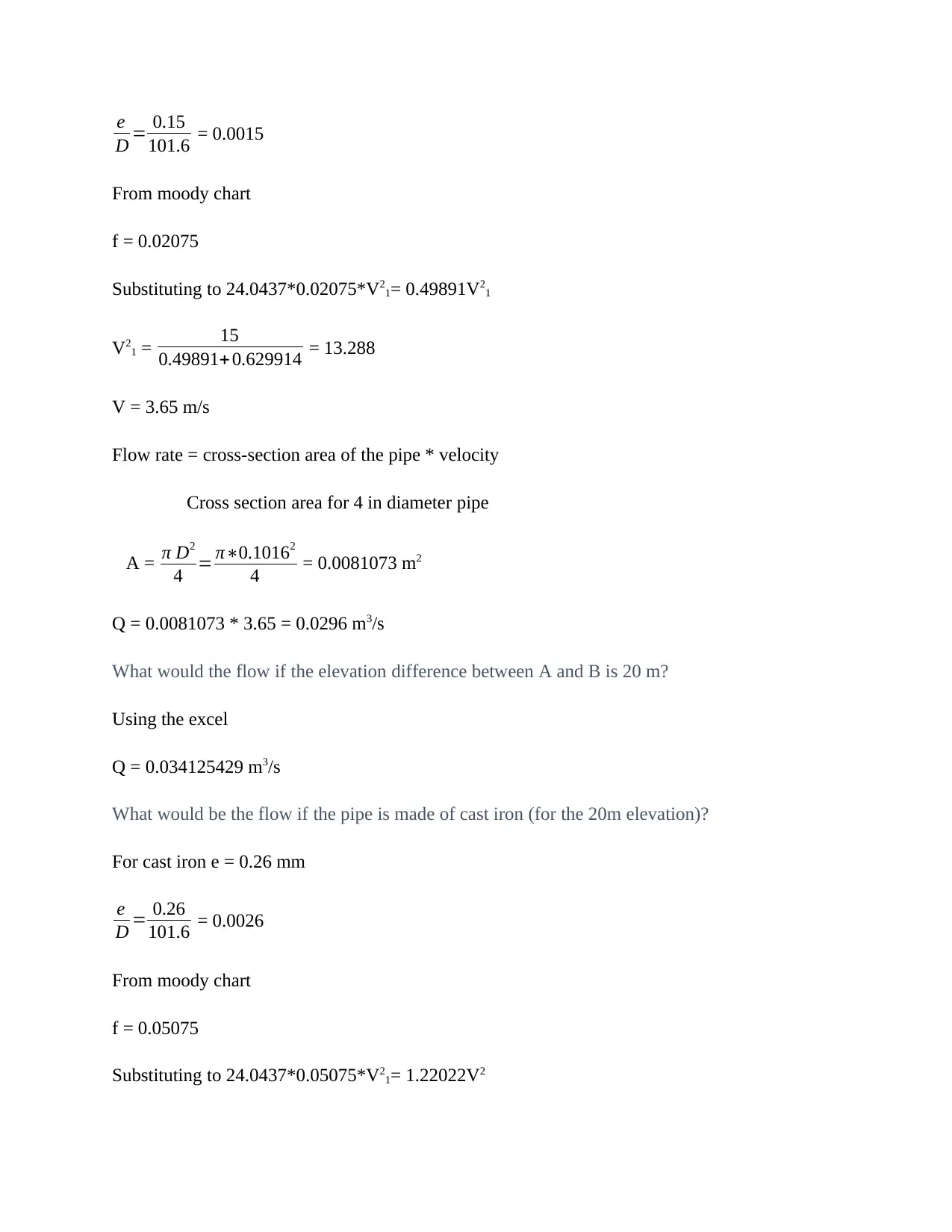CHEG232 Fluid Mechanics: Water Flow Rate Calculation in Pipe System
VerifiedAdded on 2023/05/31
|5
|532
|60
Homework Assignment
AI Summary
This assignment solution calculates the volume flow rate of water in a pipe system using Bernoulli's equation and considers factors like pipe diameter, length, roughness, and elevation differences. The solution addresses three scenarios: determining the initial flow rate, calculating the flow rate with a 20m elevation difference, and assessing the flow rate if the pipe is made of cast iron with the same elevation difference. Calculations include major and minor losses, friction factors derived from the Moody chart, and the application of the continuity equation. The final results provide the volume flow rate in cubic meters per second for each scenario, demonstrating the impact of elevation and pipe material on the flow characteristics within the system. This detailed solution, ideal for students studying fluid mechanics, is available on Desklib, which also offers a range of solved assignments and study resources.
1 out of 5












![[object Object]](/_next/static/media/star-bottom.7253800d.svg)